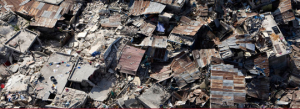After a powerful 7.8 earthquake shook the nation of Nepal last Saturday, many media outlets around the world are asking whether anything could have been done to save some of the nearly 4,000 lives who were lost because of the quake.
Julie Rose, host of the “Top of Mind” show on BYU Radio and former NPR reporter, asked this very question to Cullen College professor Craig Glennie on April 27.
Glennie, assistant professor of civil and environmental engineering, published a study in the April 10 issue of the AAAS journal Science Advances that found smartphones and other personal electronic devices could function as early warning systems for large earthquakes. The research was a collaboration among scientists from the U.S. Geological Survey, California Institute of Technology (Caltech), the University of Houston, NASA’s Jet Propulsion Laboratory, and Carnegie Mellon University-Silicon Valley, and included support from the Gordon and Betty Moore Foundation.
Rose invited Glennie onto her radio program to discuss whether smartphone-based early warning systems for earthquakes might serve as a viable alternative to more sophisticated early warning systems for earthquakes, which can cost millions of dollars to implement. Glennie said he believes the technology could serve regions of the world that cannot afford higher quality but more expensive conventional earthquake early warning systems.
While the smartphone-based system Glennie and his collaborators developed is less accurate than conventional early warning systems for earthquakes, Glennie said that both technologies provide about the same amount of early warning – 20 to 25 seconds, to be exact.
“Even with most sophisticated warning systems, we probably could have only given the people of Katmandu about 20 to 25 seconds of prior warning about the earthquake,” Glennie said.
While 25 seconds may not seem like a very long time to prepare for a quake, it is in many cases enough time to make the difference between life and death. For instance, drivers can pull off the road, people inside of buildings can stand beneath a doorway and a surgeon operating on a patient can retract the scalpel, Glennie added.
To read more about Glennie’s smartphone-based early warning detection system for earthquakes, please visit here.
To listen to the full episode of “Top of Mind with Julie Rose,” please visit here.
